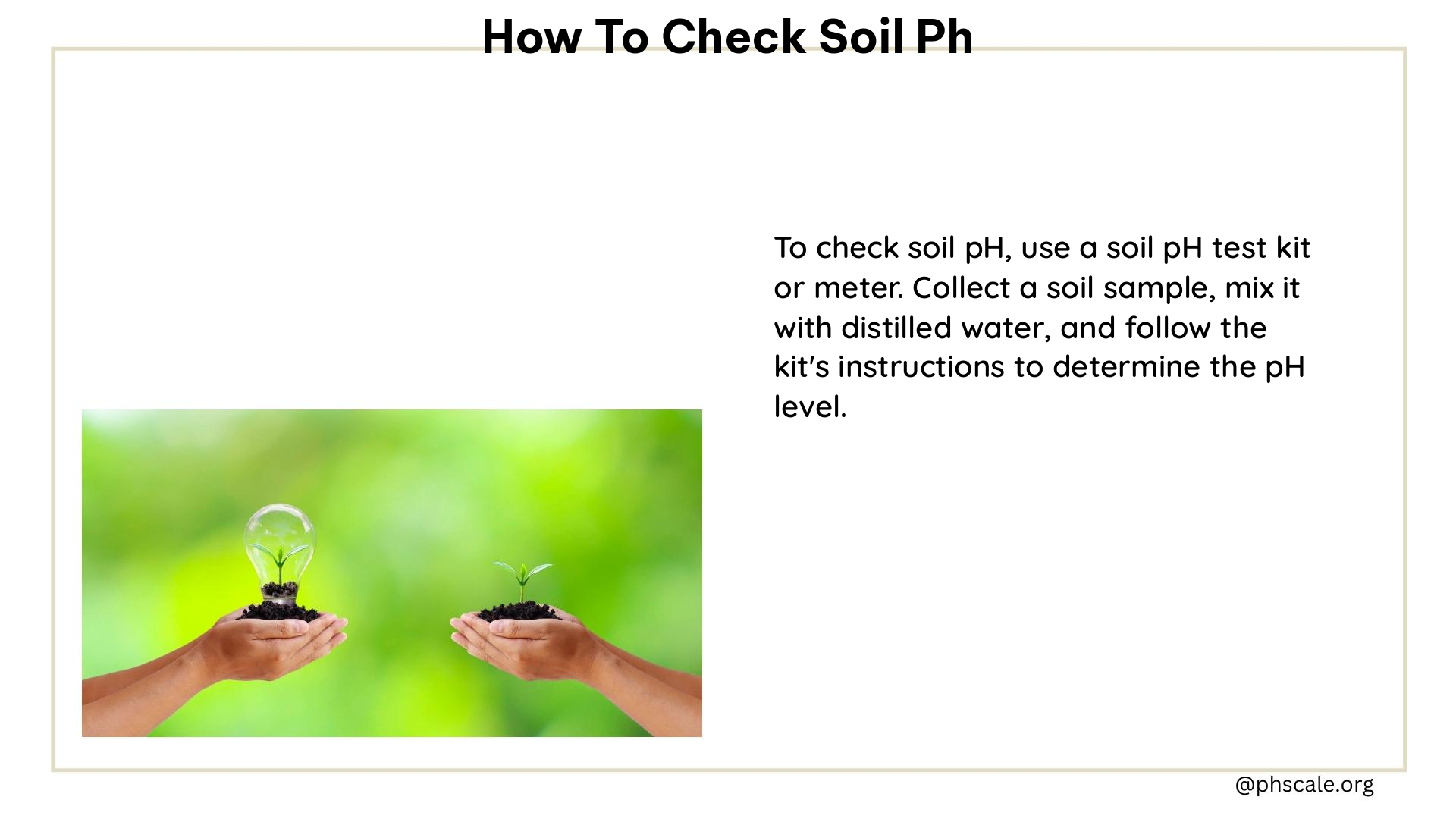Maintaining the right soil pH is crucial for the health and growth of your plants. Soil pH is a measure of the acidity or alkalinity of the soil, and it can significantly impact the availability of essential nutrients for your plants. In this comprehensive guide, we’ll explore various methods to check the pH of your soil, from DIY tests to professional lab analysis, to help you understand and optimize the conditions for your garden.
DIY Soil pH Tests
Baking Soda and Vinegar Test
One of the simplest and most accessible ways to test your soil’s pH is the baking soda and vinegar test. Here’s how to do it:
- Mix 1 tablespoon of baking soda with 1 tablespoon of soil in a small container.
- Add 1 tablespoon of vinegar to the mixture.
- If the mixture fizzes, your soil is acidic.
- Mix 1 tablespoon of vinegar with 1 tablespoon of soil in a separate container.
- Add 1 tablespoon of baking soda to the mixture.
- If the mixture fizzes, your soil is alkaline.
This test provides a rough estimate of your soil’s pH, but it’s not as accurate as other methods.
pH Test Strips
pH test strips are another easy-to-use DIY option for checking your soil’s pH. Here’s how to use them:
- Mix a soil sample with distilled water.
- Dip the pH test strip into the mixture.
- Compare the color of the test strip to the pH scale provided in the kit.
- The color will indicate the approximate pH level of your soil.
pH test strips are inexpensive and can provide a quick, on-the-spot assessment of your soil’s acidity or alkalinity.
Electronic Soil Testers

Digital and Analog Soil Probes
For a more precise and convenient way to measure your soil’s pH, consider using a digital or analog soil probe. These handheld devices are inserted directly into the soil, providing an accurate pH reading.
To use a soil probe:
- Insert the probe into the soil, following the manufacturer’s instructions.
- Wait for the reading to stabilize, which can take a few minutes.
- The probe will display the soil’s pH level, typically on a digital screen or analog dial.
Soil probes are a great option for frequent pH monitoring, as they allow you to quickly check the pH in different areas of your garden or lawn.
Professional Soil Testing
Sending Soil Samples to a Lab
For the most comprehensive and accurate assessment of your soil’s pH, consider sending a soil sample to a professional lab for analysis. Here’s how to do it:
- Collect 3-5 soil samples from different areas of your garden or lawn, each from 4-6 inches below the surface.
- Mix the samples together in a clean container.
- Package the mixed sample and send it to your local extension service or a reputable soil testing lab.
- The lab will analyze the sample and provide a detailed report on your soil’s pH, as well as other important soil characteristics.
Professional soil testing can provide valuable insights into the overall health and nutrient composition of your soil, allowing you to make informed decisions about amendments and management practices.
Interpreting Soil pH Results
The ideal soil pH range for most plants is between 6.0 and 7.5. If your soil’s pH falls outside of this range, you may need to make adjustments to optimize the growing conditions for your plants.
- Acidic soil (pH below 6.0): Add lime or other alkaline amendments to raise the pH.
- Alkaline soil (pH above 7.5): Add sulfur or other acidic amendments to lower the pH.
It’s important to follow the recommendations provided by your soil testing lab or research the specific pH requirements of the plants you’re growing.
Conclusion
Regularly checking the pH of your soil is an essential step in maintaining a healthy and thriving garden or lawn. By using a combination of DIY tests, electronic soil probes, and professional lab analysis, you can gain a comprehensive understanding of your soil’s pH and make the necessary adjustments to create the optimal growing conditions for your plants.
Remember, soil pH is just one aspect of soil health, and it’s important to consider other factors, such as nutrient levels, organic matter content, and soil structure, to ensure the long-term success of your gardening efforts.
References:
– How to Test Soil pH Without a Test Kit
– Do-It-Yourself Soil pH Test
– How to Test Soil pH
– Recommendations for Soil pH Meters
